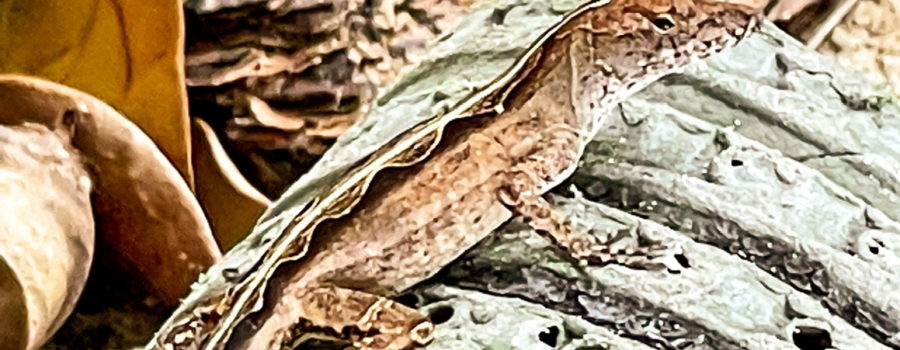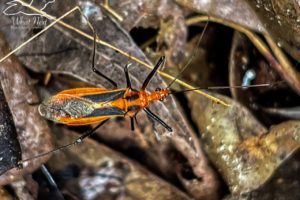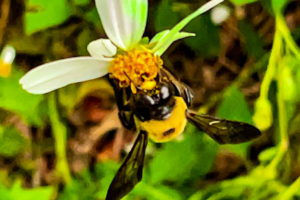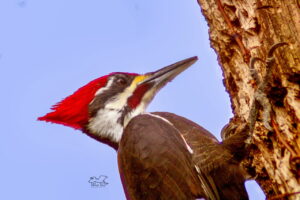Brown Anoles are Nonnative, but Great for Gardens

At my office we have several types of anoles and lizards. The majority of the ones we have are the green anoles, which are native to this area, but we do also have some of the invasive brown anoles, also known as the Bahaman anole or De la Sagra’s anole. They are native to the Bahamas and Cuba, but have been in Florida since the early 1970s. No one knows for sure how they got here, but it was probably a combination of eggs hidden in dirt in imported plants, adults stowed away in imported vehicles, furniture, etc., and escaped pets. These anoles are highly adaptable, have a good reproductive capability, and are voracious eaters, all of which help them to outcompete native species. Not only has this anole colonized Florida, but they are also now common in parts of Georgia, Alabama, Louisiana, Texas, Hawaii, and California as well as a number of Caribbean islands.

This time of the year is the breeding season for all of our Florida reptiles, including the brown and green anoles. The other day, I was headed out of the office to go to the kennels and I spotted the first juvenile anole that I’ve seen so far this year. It was a small brown anole, and it honestly wasn’t too keen on my presence or my following it with my camera. The brown anoles tend to be more shy than the green anoles, especially as juveniles. This little one was a typical looking light brown color with dark brown marking on it’s back and legs. Like the green anoles, the brown anoles have the ability to change color, but they can only change between shades of brown. Adult males and females can easily be distinguished in several ways. The easiest way is by size. Males are notably larger (sometimes up to twice as large) than females. Males also tend to be more colorful with more dark brown, white, and black markings and spots. Females (and juveniles) usually have a white dorsal stripe down the back with diamond shaped markings on either side, but very few other marks. Males also have a bright orange dewlap that is used in territorial and mating displays. Females have only a small dewlap that they don’t really use.

Even though brown anoles are a nonnative, invasive species that may not be very good for the native green anole population, they are here to stay. Knowing this, we may as well put them to use in our gardens. They tend to be ground dwellers (green anoles tend to be more arboreal, especially since the introduction of the brown anole) with incredible appetites for insects including aphids, flies, gnats, moths, crickets, grasshoppers, mealworms, roaches, spiders, and beetles. Adults may even eat juvenile green anoles, small fish, and their own shed skin and tails (they are one of several lizard species that can shed their tails when threatened). So if you spot these guys running around in your yard or garden, let them be. They are very efficient at removing pests that annoy people and destroy plants.






Recent Comments